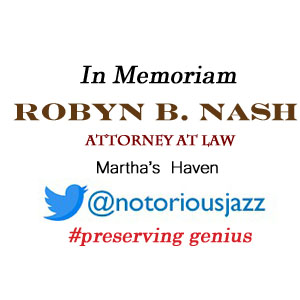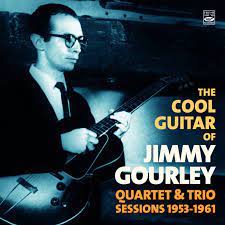
Daily Dose Of Jazz…
James Pasco Gourley, Jr. was born June 9, 1926 in St. Louis, Missouri. He met saxophonist Lee Konitz in Chicago when both were members of the same high school band and credits Konitz with encouraging him to become a serious musician.
His father started the Monarch Conservatory of Music in Hammond, Indiana, though he didn’t teach and bought his son his first guitar. Jimmy took his first guitar classes at the school and became interested in jazz while listening to the radio, enjoying in particular Nat King Cole. For his first professional experience as a performer, he dropped out of high school to play with a jazz band in Oklahoma City, Oklahoma.
From 1944 to 1946 Gourley served in the U.S. Navy. Upon his return to Chicago, Illinois he met guitarist Jimmy Raney and wanted to play like him. He worked in bars and clubs with Jackie Cain & Roy Kral, Anita O’Day, Sonny Stitt, and Gene Ammons. Through the G.I. Bill he received tuition for three years to any college in the world.
Beginning in 1951, Jimmy spent the rest of his life in France, working with Henri Renaud, Lou Bennett, Kenny Clarke, Richard Galliano, Stéphane Grappelli, Bobby Jaspar, Eddy Louiss, Martial Solal, and Barney Wilen. He played with American musicians who were passing through, including Bob Brookmeyer, Clifford Brown, Stan Getz, Gigi Gryce, Roy Haynes, Lee Konitz, Bud Powell, Zoot Sims, Lucky Thompson, and Lester Young.
Guitarist Jimmy Gourley, who spent the better part of his life in Paris, France transitioned at the age of 82 on December 7, 2008 in Villeneuve-Saint-Georges, France.
More Posts: bandleader,guitar,history,instrumental,jazz,music
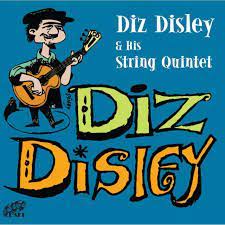
Daily Dose Of Jazz…
William Charles “Diz” Disley was born on May 27, 1931 in Winnipeg, Manitoba, Canada, where his parents worked. When he was four, they moved back to Llandyssil in Montgomeryshire, Wales and then five years later to Ingleton, North Yorkshire, England where his mother worked as school teacher. During his childhood he learned to play the banjo, but took up jazz guitar at the age of 15, after being exposed to the playing of Django Reinhardt. His neighbour Norry Greenwood taught him the chords to Miss Annabel Lee and Try a Little Tenderness in the summer of 1946.
Showing an early gift for drawing, he left school to enroll at Leeds College of Art, which had a reputation for student music making, in particular trad jazz. Soon he was playing in the Vernon City Ramblers and the Yorkshire Jazz Band with trumpeter Dick Hawdon and clarinettist Alan Cooper.
Post National Service in 1953, he resumed his studies in Leeds, and began selling cartoons to national newspapers and periodicals. A move to London, England saw him joining Mick Mulligan’s band with George Melly. He worked with most of the trad jazz bands of the day, including Ken Colyer, Cy Laurie, Sandy Brown, Kenny Ball, and Alex Welsh. In 1958, he formed a quintet to replicate that sound, employing violinist Dick Powell, guitarists Danny Pursford and Nevil Skrimshire, and a range of double bassists including Tim Mahn.
Disley started working as guitarist with a number of skiffle groups as it took over from trad jazz working and recording with Ken Colyer, Lonnie Donegan, Bob Cort, Nancy Whiskey. He would go on to persuade Stephane Grappelli to return to public performances using an all-strings acoustic line-up, recreating the spirit of the Quintette for a new generation of listeners. This began a collaboration between Grappelli and the Diz Disley Trio, sometimes billed The Hot Club of London, and after twenty years he broke his wrist when he was knocked down by a motorcycle. In 1978 Grappelli, Disley, and others were invited by David Grisman to contribute the score to the film King of the Gypsies. Grappelli and Disley had walk-on parts as gypsy musicians and were suitably attired for the occasion, but the soundtrack to the movie was never released.
In the 1980s Disley formed a working partnership with gypsy jazz guitar prodigy Bireli Lagrene, then put together a club quintet for Nigel Kennedy, and the Soho String Quintette that recorded Zing Went The Strings for Waterfront Records.
In the 1990s, he spent several years in Los Angeles, California and delved into blues and country-rockabilly. He moved to Spain in the 2000s and painted several portraits of jazz musicians in the cubist style. In early 2010 his health took a turn for the worse, and he was admitted to the Royal Free Hospital in Hampstead, England on February 2nd. Guitarist Diz Disley transitioned on March 21, 2010.
More Posts: bandleader,guitar,history,instrumental,jazz,music
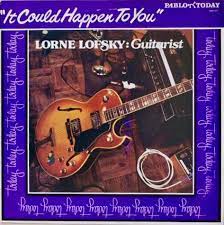
Daily Dose Of Jazz…
Lorne Lofsky was born May 10, 1954 in Toronto, Ontario, Canada and began playing rock at school dances but later took an interest in jazz after hearing the album Miles Davis’ Kind of Blue. During the 1970s he attended York University in Toronto studying music while working around Toronto’s clubs. He worked with Canadian musicians Butch Watanabe and Jerry Toth and with Pepper Adams, Bob Brookmeyer and Chet Baker when they visited.
In 1980, Lofsky met fellow Canadian, pianist Oscar Peterson, who produced his first album It Could Happen to You. He toured with Peterson in the 1980s, and he toured and recorded as a member of Peterson’s quartet and quintet in the 1990s. Lofsky has also worked with Ed Bickert, Ruby Braff, Rosemary Clooney, Kirk MacDonald, Rob McConnell, Tal Farlow, Dizzy Gillespie, Johnny Hartman, and Clark Terry.
In the early-1980s, Lofsky began an important musical association with saxophonist Kirk Macdonald leading to the formation of a quartet. From 1983 to 1991 Lofsky played in a quartet with guitarist Ed Bickert. This collaboration yielded two recordings, one for Concord Records titled This Is New, along with a tour of Spain in 1991.
He has taught at York University, Humber College’s Community Music School and the University of Toronto. Guitarist Lorne Lofsky continues to perform, record, and tour.
More Posts: bandleader,guitar,history,instrumental,jazz,music

Daily Dose Of Jazz…
Denys Justin Wright was born on May 6, 1924 in Deptford, London, England and grew up in Brockley. His first instrument was the piano but was soon trying to play his brother’s guitar. Known professionally as Denny Wright, he began playing professionally before World War II while at school. He nearly always used his thumb on the top E string and could only play as fast as he could sing.
Wright spent the first part of World War II playing in jazz clubs in the West End of London, doing session work and performing in bands on radio shows. He worked with Stephane Grappelli for the first time in London around 1941. At school he served with the Auxiliary Fire Service in Brockley. Classified medically unfit to serve due to a childhood injury, he joined Entertainments National Service Association (ENSA), entertaining the troops.
In 1945 he started the first bebop club in London where he played piano and guitar. The late 1940s saw him touring Italy and the Middle East with the Francisco Cavez Orchestra. Throughout the 1950s DEnny provided guitar accompaniments for Lonnie Donegan, Johnny Duncan, Humphrey Lyttelton, and Marie Bryant, as well as appearing on Guitar Club on the BBC. In 1952, he accompanied Tex Ritter for a season at the Texas Western Spectacle, and with Joel David on Old Bones and added a guitar solo on Be My Valentine Tonight.
Establishing the Denny Wright Trio with violinist Bob Clarke took skiffle and jazz to the Soviet Union in 1957 for the 6th World Festival of Youth and Students. For four decades from the Forties he worked as a session musician working with the likes of Mary Hopkin, Dusty Springfield and Tom Jones. In the 1960s, he went on to record under The Cooper-Wright Quintet, and during the late Seventies formed the band Velvet with Ike Isaacs, Len Skeat, and Digby Fairweather.
Never one to not be working he continued to put bands together as well as lecturing and giving private lessons. He arranged for and fixed sessions, and was a prolific jazz and orchestra composer. He worked with Latin American, Afro-Cuban and Jamaican bands. Denny was voted the 1980 BBC Jazz Society Musician of the Year.
Guitarist, pianist, arranger and composer Denny Wright transitioned on February 8, 1992 in London after a nine-year battle with bladder cancer.
More Posts: bandleader,guitar,history,instrumental,jazz,music
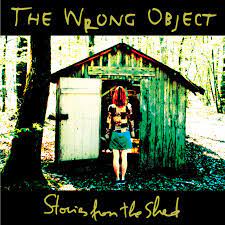
Daily Dose Of Jazz…
Michel Delville was born on April 30, 1969 in Liège, Belgium. He has been performing and composing alternative music since the mid-1980s. His bands include The Wrong Object, douBt, Machine Mass feat. Dave Liebman, Alex Maguire’s Electric 6tet, the New Texture Pan Tonal Fellowship, the Ed Mann Project, and the Moving Tones.
He has worked with Elton Dean, Annie Whitehead, Harry Beckett, Richard Sinclair, Ed Mann, Dagmar Krause, Benoît Moerlen, Karen Mantler, Geoff Leigh, Markus Stauss, Guy Segers, Klaus Blasquiz, Gilad Atzmon, and Dirk Wachtelear.
In 2009 Delville created the trio douBt with Alex Maguire and Tony Bianco and released their debut album, Never Pet a Burning Dog. The following year he was invited to join and coordinate Comicoperando, a tribute to the music of Robert Wyatt. The band toured Europe and Canada as a sextet in 2011, then went on to collaborate with the international collective 48 Cameras and Robin Rimbaud. In 2018 he was voted one of the three best electric guitarists of the year by Arnaldo DeSouteiro’s Annual Jazz Station Poll.
He has authored, edited or co-edited numerous books about comparative poetics and interdisciplinary studies and has been awarded several times for his writings. The rank of Officer of the Order of Leopold I was bestowed upon him in 2009, and he received the 2009 Prix Wernaers for research and dissemination of knowledge. He has recorded more than three dozen albums across the groups he has founded or been a part of.
Guitarist, writer and critic Michel Delville, who composes and performs in the jazz fusion and progressive rock genres, teaches literature at the University of Liège, and continues to compose and perform.
More Posts: bandleader,guitar,history,instrumental,jazz,music




